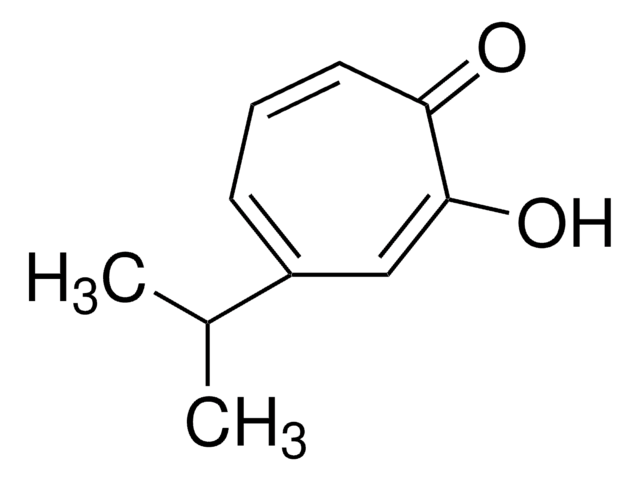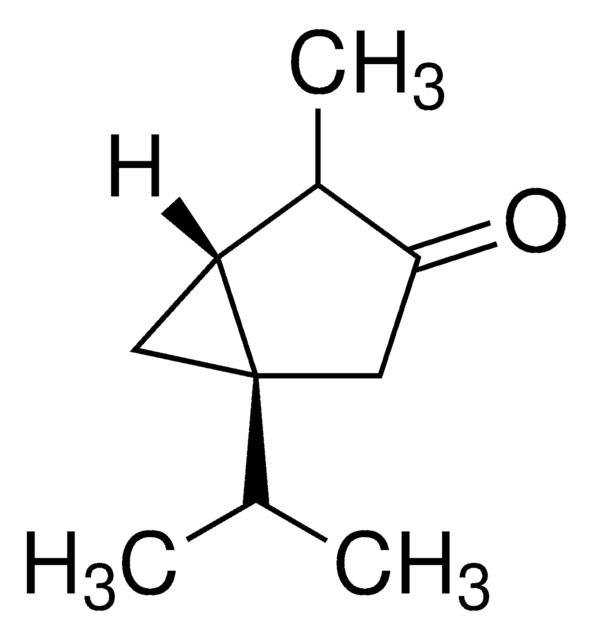79851
ケンフェロール3-β-D-グルコピラノシド
≥97.0% (HPLC)
別名:
3,4′,5,7-テトラヒドロキシフラボン3-グルコシド, 3-(β-D-グルコピラノシルオキシ)-5,7-ジヒドロキシ-2-(4-メトキシフェニル)-4H-1-ベンゾピラン-4-オン, 3-グルコシルケンフェロール, Astragalin, ケンフェロール3-グルコシド
About This Item
おすすめの製品
アッセイ
≥97.0% (HPLC)
形状
crystals
保管温度
2-8°C
SMILES記法
OC[C@H]1O[C@@H](OC2=C(Oc3cc(O)cc(O)c3C2=O)c4ccc(O)cc4)[C@H](O)[C@@H](O)[C@@H]1O
InChI
1S/C21H20O11/c22-7-13-15(26)17(28)18(29)21(31-13)32-20-16(27)14-11(25)5-10(24)6-12(14)30-19(20)8-1-3-9(23)4-2-8/h1-6,13,15,17-18,21-26,28-29H,7H2/t13-,15-,17+,18-,21+/m1/s1
InChI Key
JPUKWEQWGBDDQB-QSOFNFLRSA-N
類似した製品をお探しですか? 訪問 製品比較ガイド
関連するカテゴリー
アプリケーション
- Role in Ubiquinone Biosynthesis: The compound contributed to the biosynthesis of the benzenoid moiety of ubiquinone, a key component in plant biochemistry, highlighting its essential role in cellular energy production and plant health (Soubeyrand et al., 2018).
生物化学的/生理学的作用
包装
保管分類コード
11 - Combustible Solids
WGK
WGK 3
引火点(°F)
Not applicable
引火点(℃)
Not applicable
個人用保護具 (PPE)
Eyeshields, Gloves, type N95 (US)
適用法令
試験研究用途を考慮した関連法令を主に挙げております。化学物質以外については、一部の情報のみ提供しています。 製品を安全かつ合法的に使用することは、使用者の義務です。最新情報により修正される場合があります。WEBの反映には時間を要することがあるため、適宜SDSをご参照ください。
Jan Code
79851-VAR:
79851-BULK:
79851-25MG:
試験成績書(COA)
製品のロット番号・バッチ番号を入力して、試験成績書(COA) を検索できます。ロット番号・バッチ番号は、製品ラベルに「Lot」または「Batch」に続いて記載されています。
この製品を見ている人はこちらもチェック
ライフサイエンス、有機合成、材料科学、クロマトグラフィー、分析など、あらゆる分野の研究に経験のあるメンバーがおります。.
製品に関するお問い合わせはこちら(テクニカルサービス)











